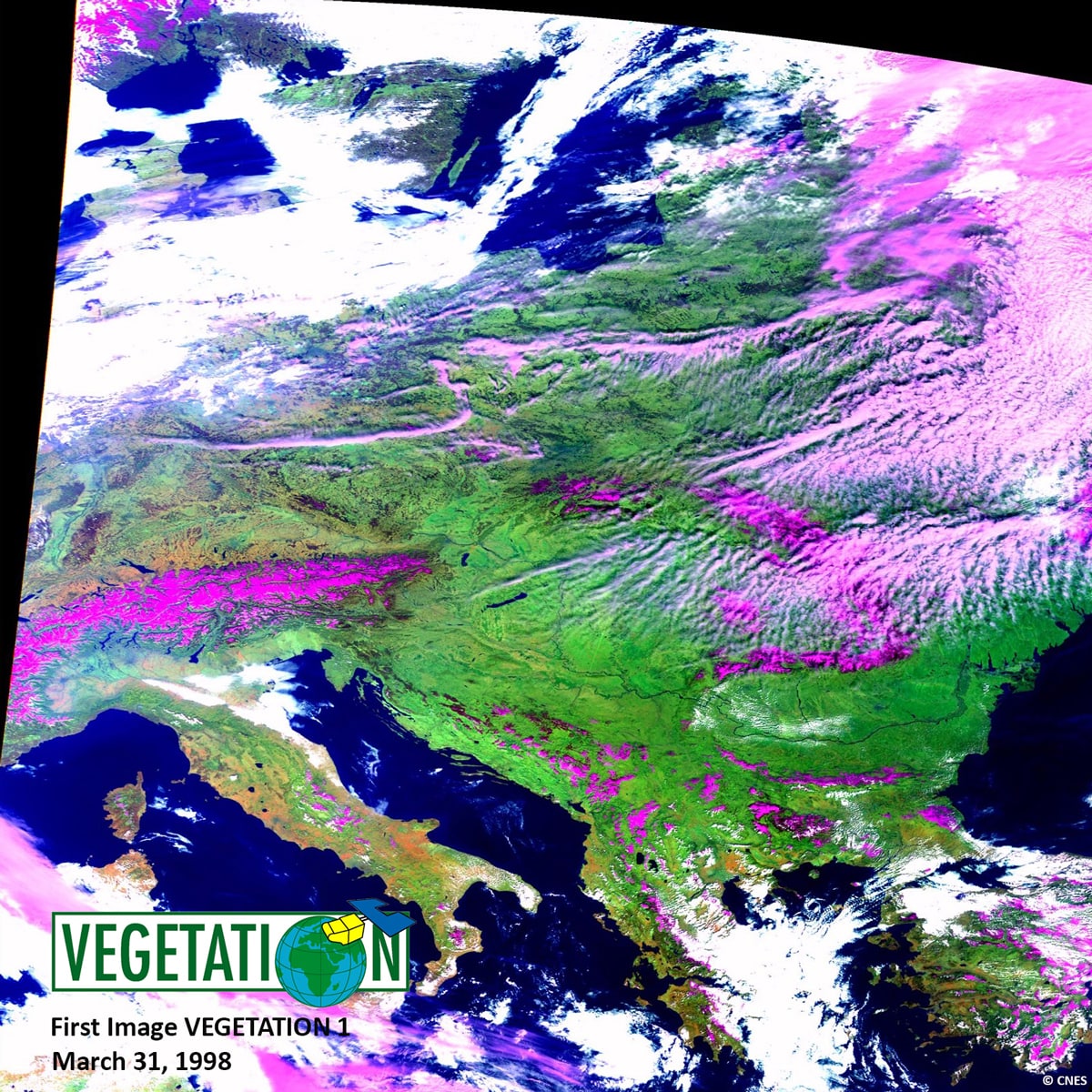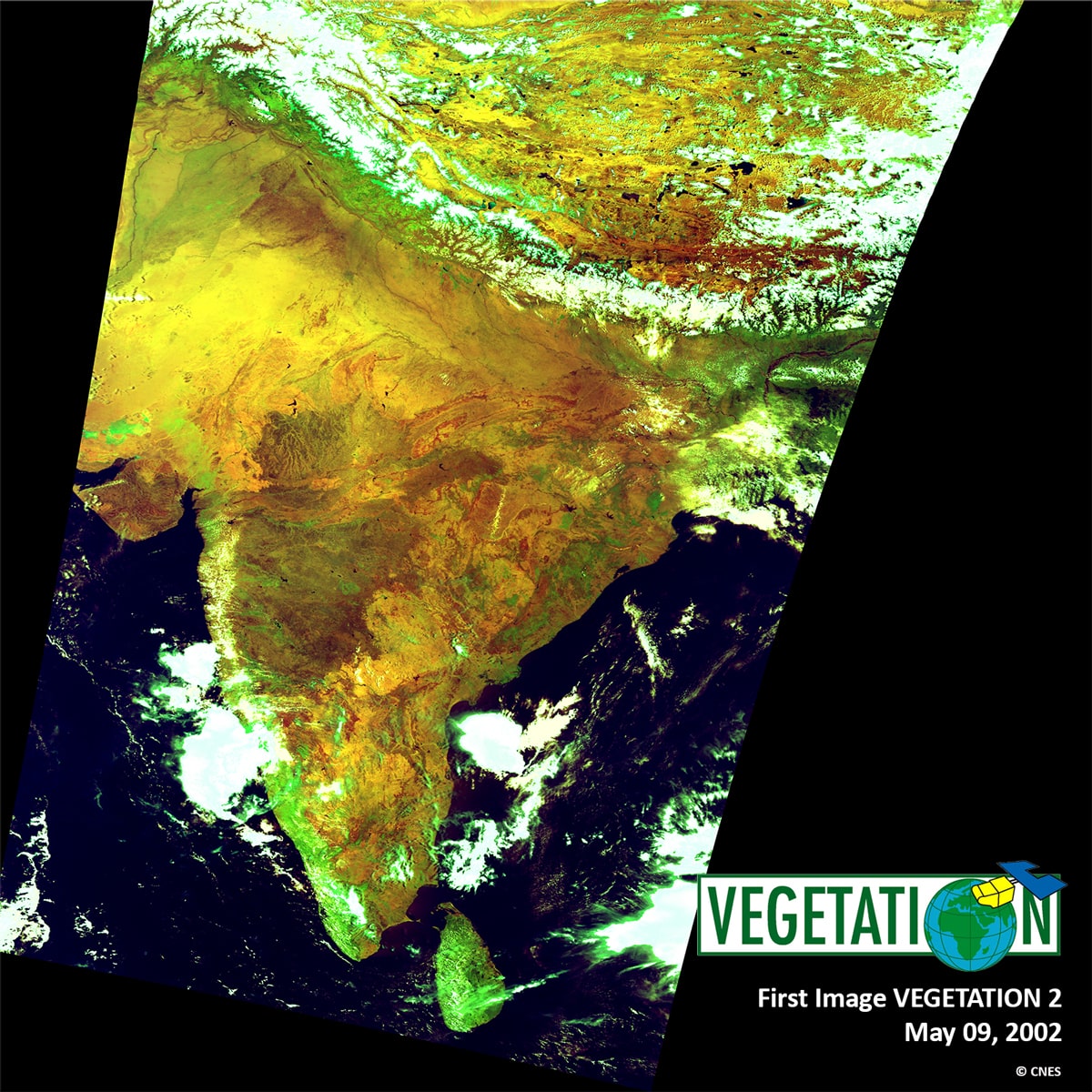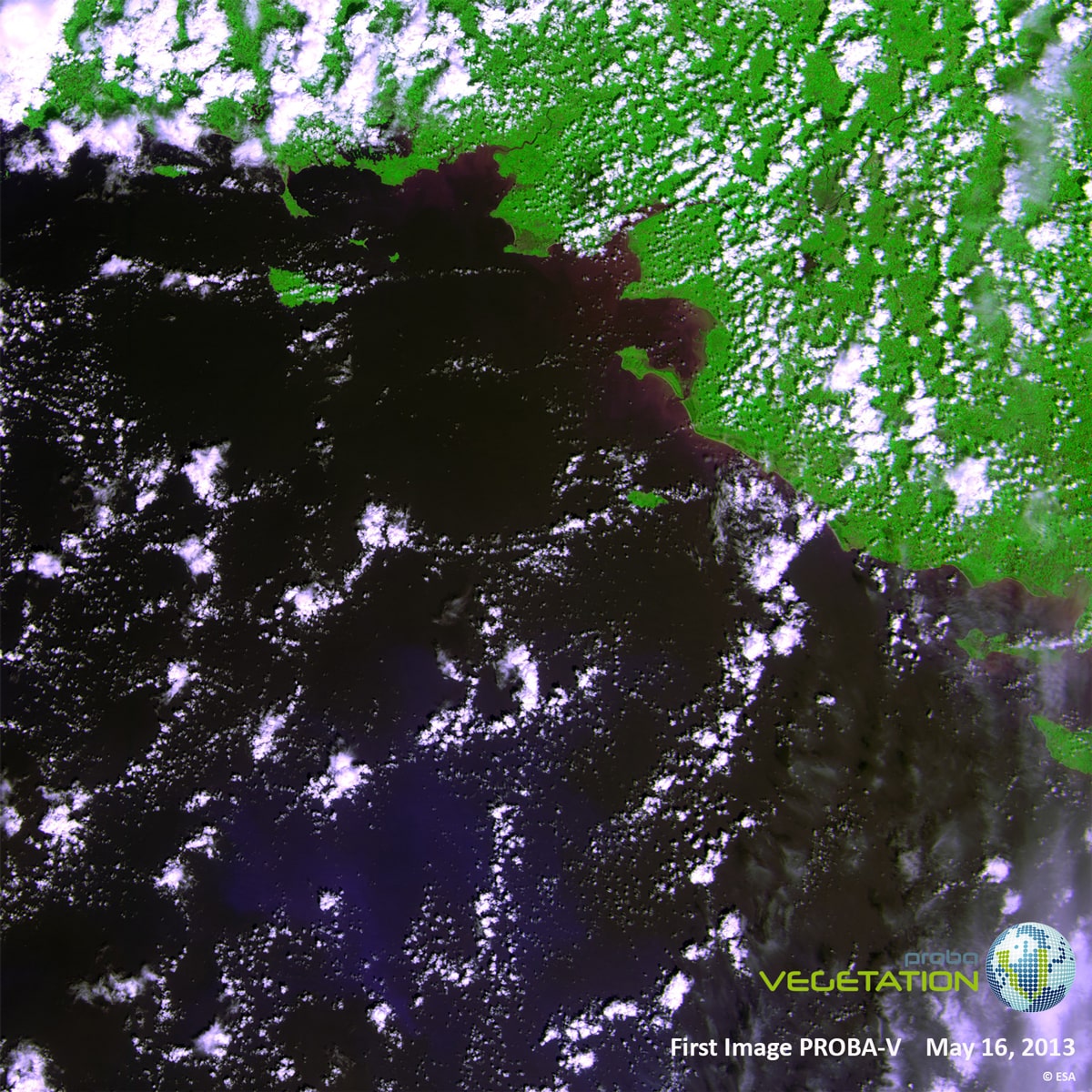“It started in the early eighties when scientists started to use the AVHHR instrument onboard the NOAA meteorological satellites series. This led to the adoption of the “daily- low resolution- global” triple design principle of the first VEGETATION instrument. Thanks to innovative and sometimes counter-intuitive set of mission innovations introduced by CNES in collaboration with the team of the EC Joint Research Center (and with financing by France, Belgium, Sweden and the EC), the VEGETATION Instruments on the Spot platforms (VGT I in 1998 and VGT II in 2002) were rapidly adopted by the scientific community.
The early 2000 years were characterized by a growing ecological consciousness and by the progressive realization that changes in resources and environment were truly global. Since the launch of a similar instrument in the GMES programme (now Copernicus) could not be foreseen before 2015-16, the possibility of a damageable 3 year gap in the continuity of global observations was real. The “Gap-filling” nature of the proposal became obvious and a decision was urgent.
In 2007, Belgium decided to develop and launch the PROBA-V(egetation) instrument in order to secure such continuity. From the beginning, users requirements drove the whole effort via the VEGETATION International Users Committee (IUC) now transformed in PROBA-V IUC. After six years of development, PROBA-V was launched from the Kourou Space Centre on 7 May 2013 and, very quickly, its panoply of data and products usefully served many objectives related to global change sciences, EU policies, natural events, cartography, etc. True to form, between 2013 and the launch of Copernicus Sentinel 3a in 2016 PROBA-V was the only European satellite dedicated to daily global monitoring of land surfaces.
From the simple idea emerging in 1987 to replicate in Europe the capabilities of the US NOAA AVHRR instrument to the almost seven years of operation of PROBA-V (2013-2020) via a fertile period of full exploitation of two SPOT Vegetation instruments (1998-2013), the demonstration has been made that continuity in earth observing systems is essential to secure a strategic and useful knowledge of the Earth System. Needless to say, this experience of over 30 years has been full of discoveries and satisfaction for those involved in the overall VEGETATION adventure.



